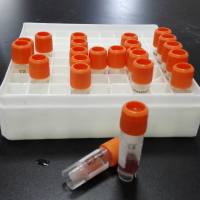The liver consists of many cell types with specialized functions. Hepatocytes are one of the main players in the organ and therefore are the most vulnerable cells to damage. Since they are not everlasting cells, they need to be replenished throughout life. Although the capacity of hepatocytes to contribute to their own maintenance has long been recognized, recent studies have indicated the presence of both intrahepatic and extrahepatic stem/progenitor cell populations that serve to maintain the normal organ and to regenerate damaged parenchyma in response to a variety of insults.
The intrahepatic compartment most likely derives primarily from the biliary tree, particularly the most proximal branches, i.e. the canals of Hering and smallest ductules. The extrahepatic compartment is at least in part derived from diverse populations of cells from the bone marrow. Embryonic stem cells (ES’s) are considered as a part of the extrahepatic compartment. Due to their pluripotent capabilities, ES cell-derived cells form a potential future source of hepatocytes, to replace or restore hepatic tissues that have been damaged by disease or injury. Progressing knowledge about stem cells in the liver would allow a better understanding of the mechanisms of hepatic homeostasis and regeneration. Although a human stem cell-derived cell type equivalent to primary hepatocytes does not yet exist, the promising results obtained with extrahepatic stem cells would open the way to cell-based therapy for liver diseases.






